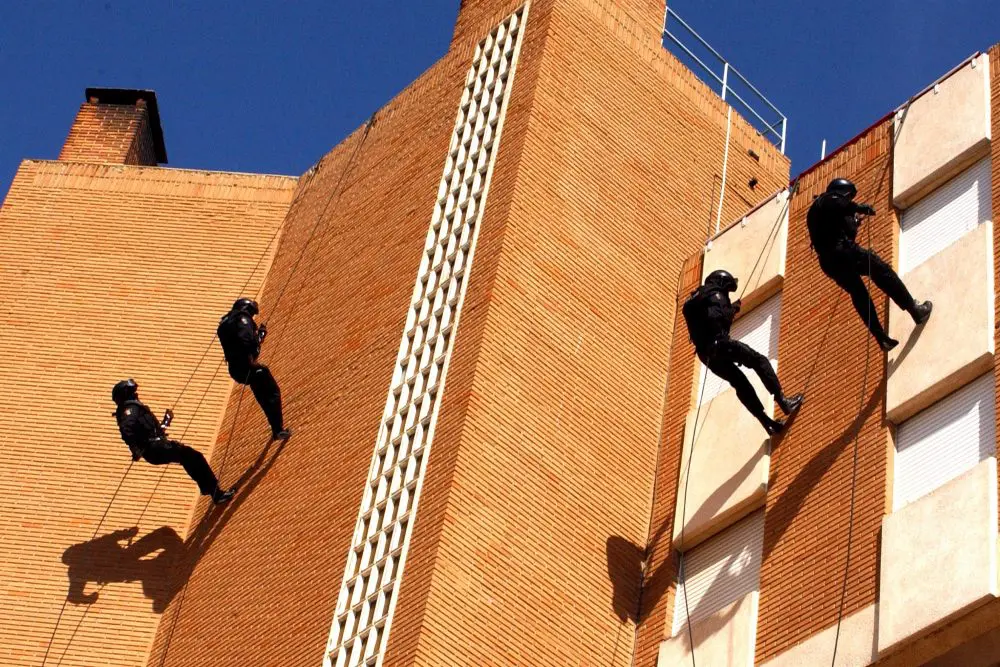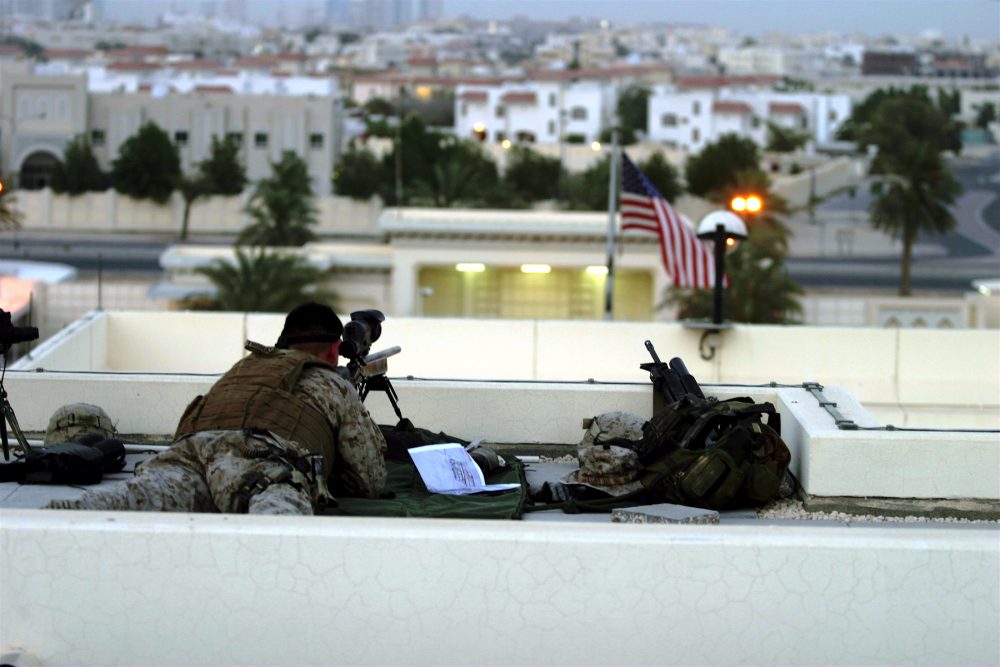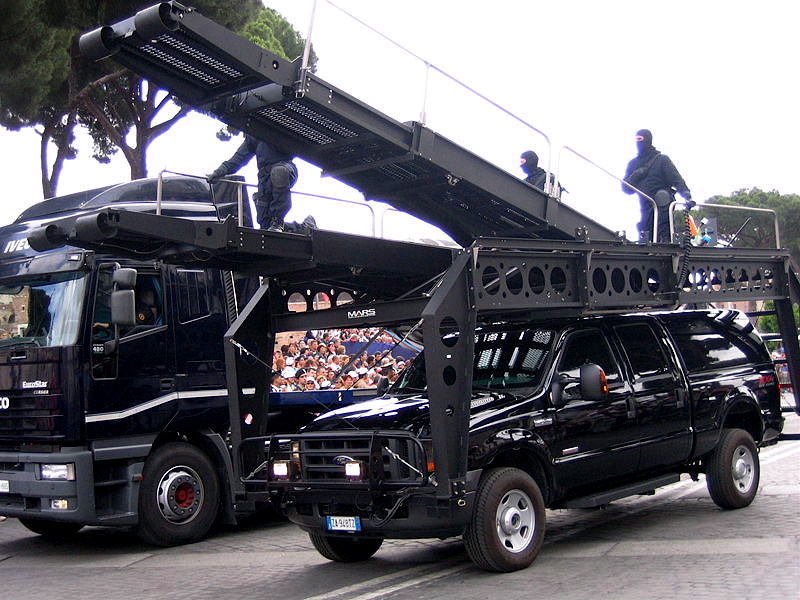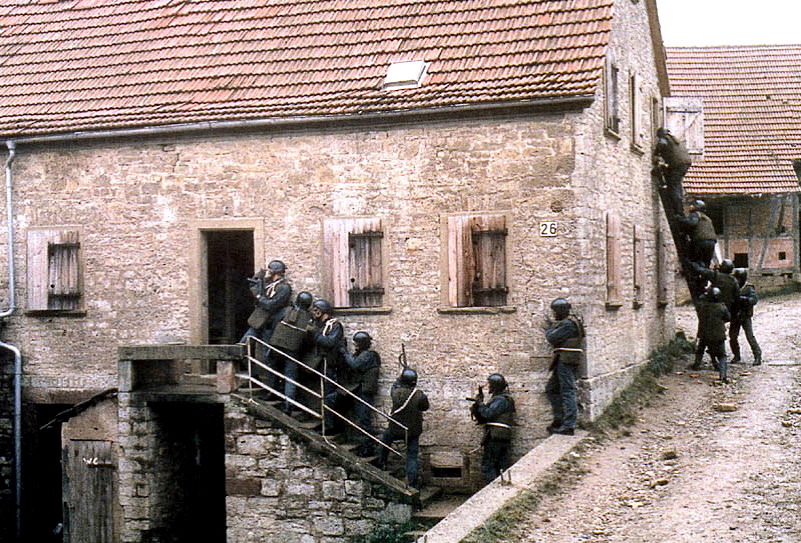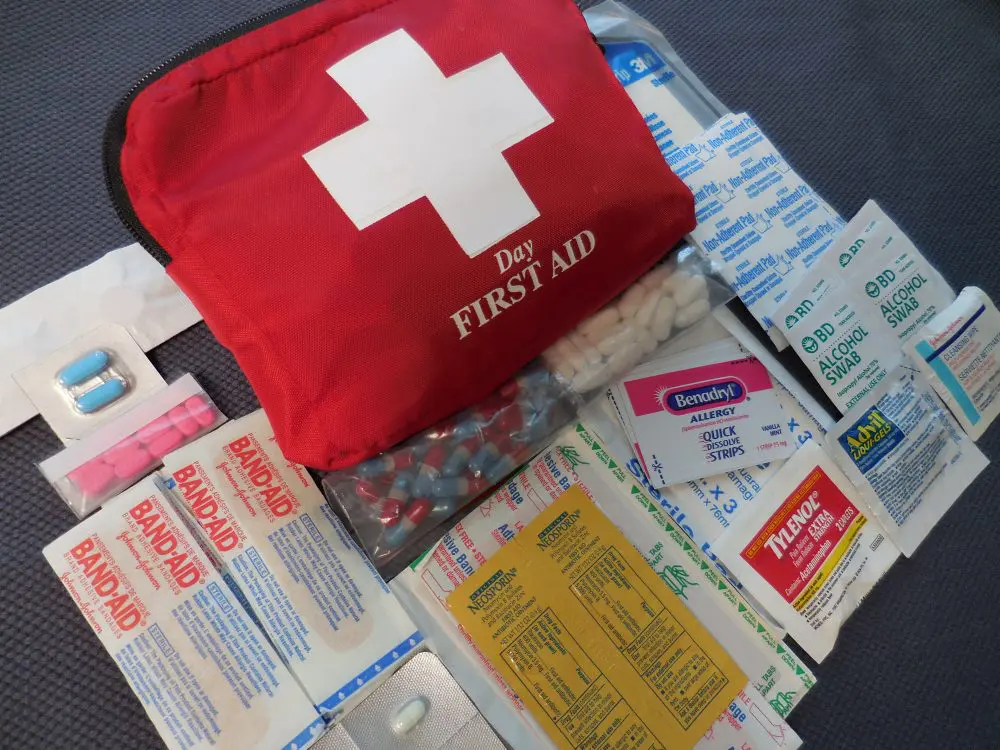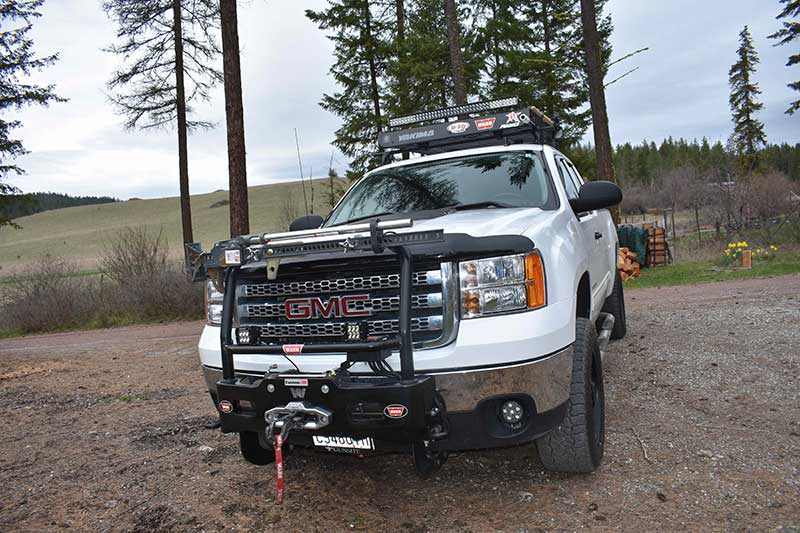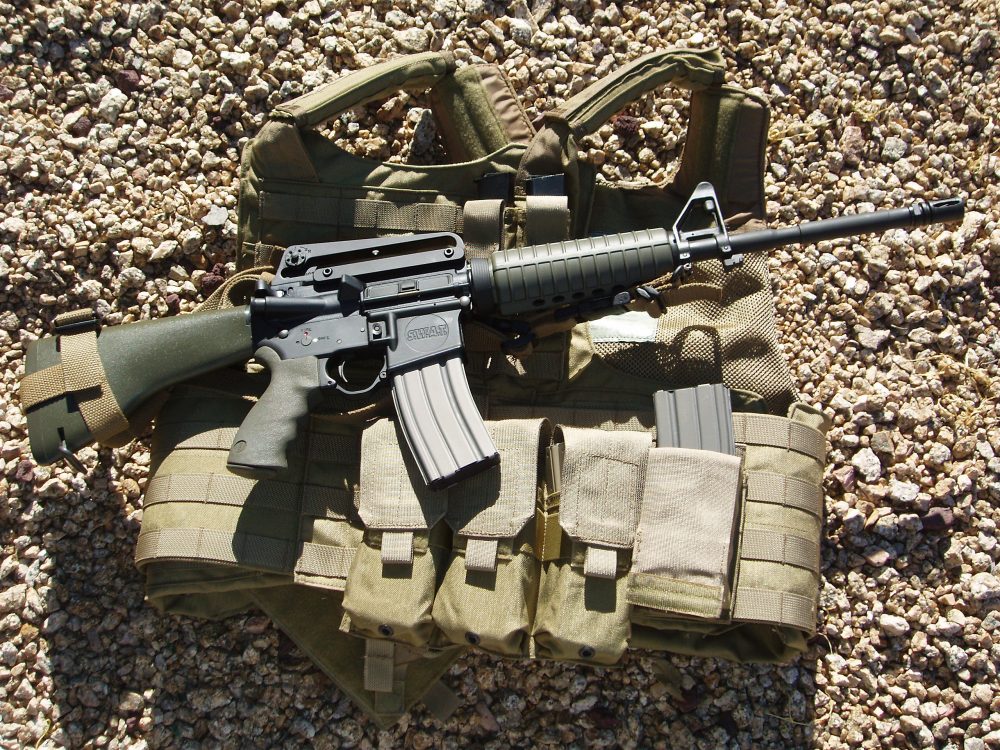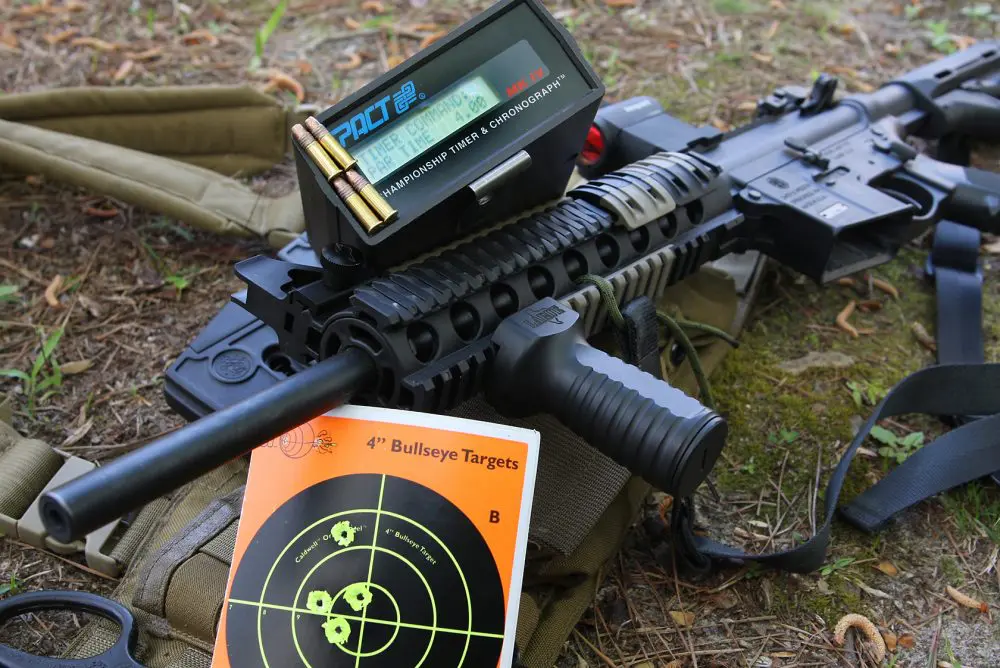For units ranging from national anti-terrorist units to local SWAT teams, the need to take down a multistory building may arise. Generally, the type of incident dealt with by a local SWAT team will be more contained and will not likely involve terrorists, but the basic techniques are similar.
An office or apartment building of five stories or less presents many of the same problems as a 100-story skyscraper, though in the latter, certain options are automatically removed from the equation.
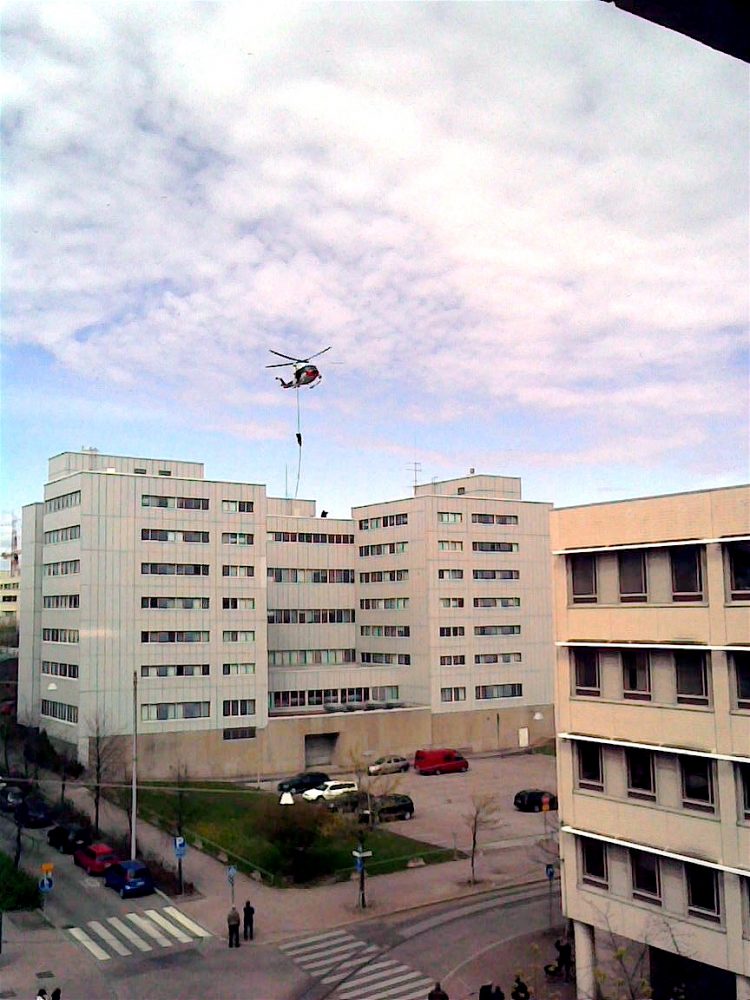
Table of Contents
INTEL
In all cases, the first pieces of intelligence that the rescue team will need are how many stories in the building and the number of hostages and terrorists, as well as their location within the building. As the incident progresses, intel about the identities of hostages and terrorists, armament, likelihood of booby traps, demands and typical methods used by the terrorist group in prior incidents will be gathered, as will every scrap of information about the building and nearby buildings.
A perimeter must be established as soon as possible to contain the incident and prevent terrorist reinforcement. A “Go Plan” will also be established in case the terrorists begin executing hostages. Initially, this plan will generally be very basic—get to the hostages fast and kill the terrorists once there. As more intel flows in, the plan will be refined.
Important sources of real-time intelligence are sniper/observer teams deployed around the incident site. The taller the building where the incident is taking place, the more difficult it may be to deploy sniper/observer teams into good position. However, the availability of more powerful rifles (.300 Win. Mag, .338 Lapua, etc.) to anti-terrorist units does allow the use of overwatch positions that may be farther away. In some cases, high ground may prove a better shooting position than nearby buildings. For example, when Delta snipers were deployed to support the rescue of Kurt Muse in Panama, they infiltrated to high ground positions overlooking the prison the day before the rescue.
To allow snipers to quickly communicate with the command post, a code system will normally be used to designate points on the building. One code in general use designates each face of the building with a color, then designates floors from the first floor up with a number, and windows or doors from left to right with a number.
Building intelligence can be obtained from employees, especially maintenance staff, from the local fire department and the local planning office. Most anti-terrorist units and some SWAT teams have done walkthroughs with video cameras of potential incident sites such as courthouses, government buildings, schools, etc. These videos may be useful for planning and briefing.
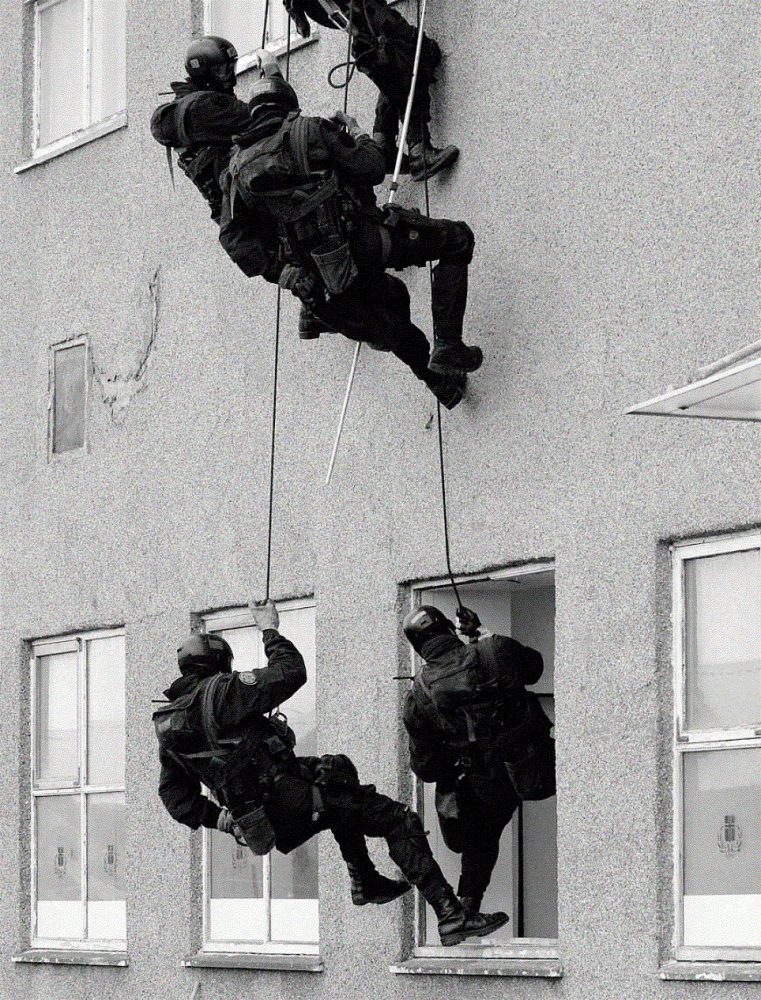
A couple of comments on skyscrapers: contrary to the film Die Hard, a terrorist incident in a high rise is likely to be contained on one or two floors rather than spread over the entire building. As a result, rescue personnel are quite likely to have access to much of the building’s infrastructure, including the security post where cameras may be monitored.
As intelligence is gathered, the rescue team starts creating an approach and entry plan. On buildings of only a few stories, entries may be carried out from street level, in which case the team clears upward; from the roof, in which case the team clears downward; or directly onto the floor being assaulted, via ladder or ramp—vehicle mounted or hand deployed—or via rappel. Insertions directly from helicopters into windows of a high rise look “high speed” in films—and they are—but they are very difficult. Sniper support from helicopters hovering near a high rise is possible but requires a great deal of training.
TYPES OF ENTRY
More sophisticated teams practice specialized types of entry. For entries to the second or third story, some teams practice free climbing, which works on certain types of buildings. For second story entry, some teams also practice an anti-terrorist version of the “cheerleader’s pyramid” to insert operators directly onto a balcony or through a window. Some units, including Russian ones, practice use of a pole held by members of a unit, up which some members quickly climb for insertion.
When rappelling down to do an entry, specialized techniques may be used as well. Many teams practice rappelling to the side of a window then peeking in. Or if it is known that terrorists are in the room, operators may rappel down and swing through the window to engage as they enter. Many teams practice an upside-down rappel (known as the Australian) that allows operators to approach just above a window to take a peek and possibly engage. The better trained the team, the more likely they have developed rappel techniques offering an array of options.
Snipers will be positioned in best overwatch position to cover the incident site. USMC sniper in position atop U.S. Embassy in Qatar. Photo: USMC
In some cases, the most effective option to place operators in position to quickly eliminate a terrorist threat may be an explosive entry through a wall, ceiling or floor. The last was used to insert operators directly into rooms containing terrorists during the rescue at the Japanese Ambassador’s Residence in Lima, Peru. Explosive entry into a room where hostages are held requires great skill so that they are not injured or killed. Techniques which limit blast effect are, however, in many teams’ repertoires.
Before actually carrying out an entry, teams will normally try to get as close as possible through stealth. To cover such an entry, the sound level in the area may be raised. Martial music was played in Lima to cover the digging of tunnels approaching the Japanese Ambassador’s residence, and aircraft approaching Heathrow Airport in London had their flight path lowered to increase the noise level over Prince’s Gate prior to the SAS assault.
Lights illuminating approach routes may be taken out with suppressed .22 weapons or the power may be cut. Normally, though, cutting the power telegraphs an assault, so it should only be done as the assault goes in. In some Third World cities, however, power cuts are so frequent that teams can use them readily. Operations at night will give the operators the advantage of using night vision goggles.
During the final stages of an assault, it may be necessary to use dynamic techniques to ram doors, use frame charges to blow doors or windows, use an armored vehicle to pull off steel bars or cutting torches to cut them, or send an assault vehicle with operators positioned on ramps speeding toward the building to deposit an assault team on the second story.
Vehicles with ramps and/or ladders mounted will often be used to insert operators directly into windows on upper stories. This vehicle is used by Italy’s GIS. Photo: Carabinieri
EQUIPMENT
Part of preparation entails making sure that the proper weapons and equipment are chosen. Ladders or ramps of the right height should be available. If using ladders or ramps on a mobile platform, they should configured to the right height and right angle for rapid insertion of a team. Prefabricated frame charges should have been prepared so that they can quickly be placed on doors or windows. Cutting torches, spreaders and other specialized breaching tools should be ready on site.
Weapons choice may vary, too, based on intel about the building and the terrorists. If terrorists are wearing ballistic vests, then weapons that will punch through them should be chosen. If interior walls are thin, frangible ammunition may be desirable. If carrying out an assault around flammable materials, suppressed weapons may offer less muzzle flash, as will specialized low-flash ammo.
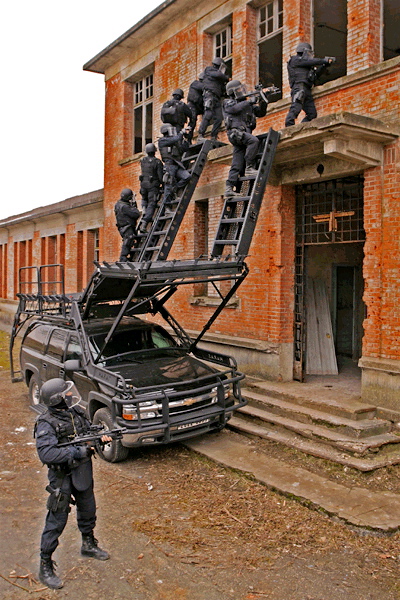
PRACTICE
Prior to going in, if the incident has dragged on for days, operators should have practiced their assault. It is normally desirable to practice on a building as similar as possible to the one that will be assaulted. Some types of buildings are built in multiples. For example, when I’ve worked with teams tasked with security at an Olympic Games, the dorms used by the athletes are normally built to a standard pattern. As a result, prior to the athletes occupying them, anti-terrorist units can practice extensively.
Some units even build a mockup of an Olympic dorm at their training facility. Prior to the recent Beijing Games, China’s Snow Wolf Commando Unit (note that this unit has also been known under other names, including Snow Leopard Commando Unit, to enhance secrecy) practiced extensively on takedowns at various venues. Likewise, prior to the Seoul Games, the ROK 707th Battalion practiced on virtually every type of building. These days such practice is standard. When the Nord Ost Theater in Moscow was seized, FSB Alpha and FSB Vympel practiced on another theater built to the same plan.
Finding a practice venue can present multiple problems, however. First, an assault team does not want to practice in view of the terrorists. When choosing a practice site, though, it should not be so far away that the team cannot be quickly available. At the Beslan school hostage crisis, the team chosen to carry out the assault was practicing many miles away when explosions in the building caused the terrorists to start killing hostages. The “Go Team,” which had been handling the perimeter, was forced to carry out an immediate ad hoc entry, while the “A Team” (literally, since FSB Alpha was to carry out the entry), which had been practicing assaults, was rushed to the site.
Even though some rehearsals may be carried out on a similar building away from the incident site, some teams will still tape off a building plan on a nearby parking lot or spray paint a plan on the grass of a park to continue to cut seconds from their movements.
Spain’s GEO anti-terrorist unit practice rappelling down side of building. Photo: Policia Nacional
“GO!”
If hostages have been placed in multiple locations or when terrorists are spread throughout a building, it will normally be necessary to make entries at multiple locations to eliminate the threat as quickly as possible. Even if terrorists and hostages are together in one location, entry at multiple points may prove desirable in case an unforeseen problem arises in carrying out an entry. If this does happen, the team entering from another point can quickly take the lead.
When clearing downward from above, teams must move quickly to the target floor while taking care not to leave terrorists behind them on upper stories or triggering booby traps. Some teams prefer to clear downward, as they feel terrorists will be more likely to attempt to escape downward rather than killing the hostages and making a “last stand” as they might if they felt trapped with nowhere to go but up.

Even with an entry from above, many teams will also carry out an entry from below through doors. Entry teams normally consist of between four and six operators and will “stack” along one of the walls. The door may be breached with a ram, cutting torch, spreader or frame charge. Once teams enter the building, they will move quickly to clear each room along hallways as they move toward stairways.
Whether clearing upward or downward, care must be taken not to get so involved with the clearing operation that the areas where hostages may be being held are ignored. For example, when Israeli Sayaret Matkal operators were attempting the rescue of children held at the school at Ma’alot, they passed the second floor where the hostages were being held. As a result, 18 children were killed, with three more dying from wounds later. At least another 50 children were wounded before the terrorists were neutralized.
Once the entries begin, snipers will give fire support by taking out any terrorists who are visible. In terrorist incidents, they may have a “green light” on any terrorists attempting to escape as well. One lesson learned at Beslan was that in large incidents, snipers must be ready to give suppressive fire on terrorists attempting to shoot fleeing hostages.
If teams are clearing from multiple directions and converging on the point where hostages are held, communications are very important to prevent a “blue on blue” shooting. Many teams try to wear some very distinctive article of clothing or gear which helps immediately identify them. Black hoods and NVGs certainly help in identifying other team members, as do large breast and back patches with “SHERIFF,” “POLICE,” “FBI,” et al imprinted. Some teams also have learned that a distinctive color on their weapons aids in fast ID because the eye is drawn to the weapon.
As soon as the area around the hostages has been secured, some team members will normally evacuate the hostages from the building and secure them until they can make sure there are no terrorists intermixed. Medical care should also be available for any hostages who have been rescued. Once the hostages are clear, any remaining terrorists can be mopped up and an explosive search carried out for booby traps before declaring the building secure.
Members of Germany’s GSG9 anti-terror unit prepare to assault two stories of a building simultaneously. Photo: BGS
SUMMARY
This has been a brief overview of major considerations when assaulting a multistory building. I have not spent time on detailed explanations of tactics for clearing rooms, hallways or stairways. Neither have I gone into detail about intelligence gathering, negotiations or other aspects of the rescue. Anyone who wants more detail can consult my book The Hostage Rescue Manual, various publications of the National Tactical Officers Association (available only to members) and other specialized sources.
